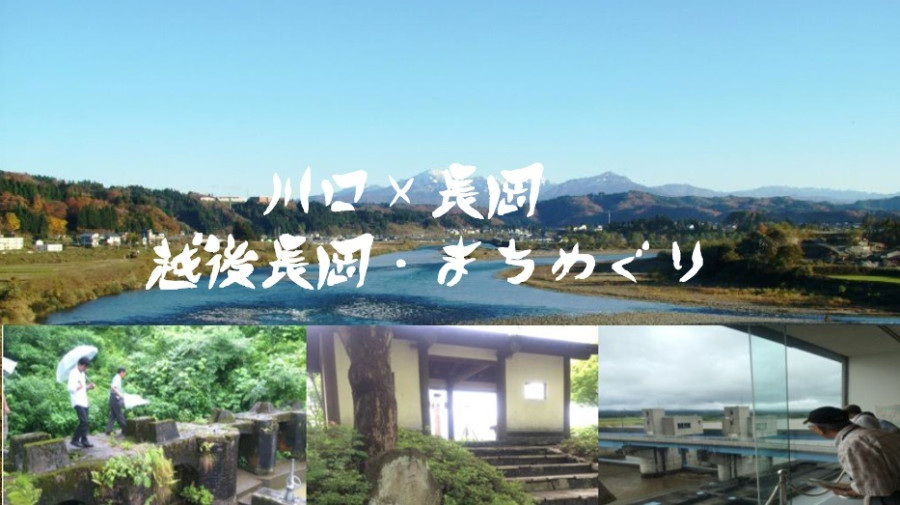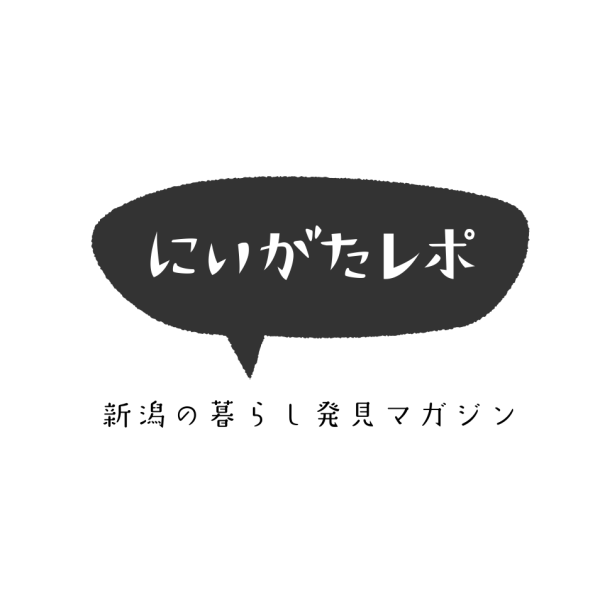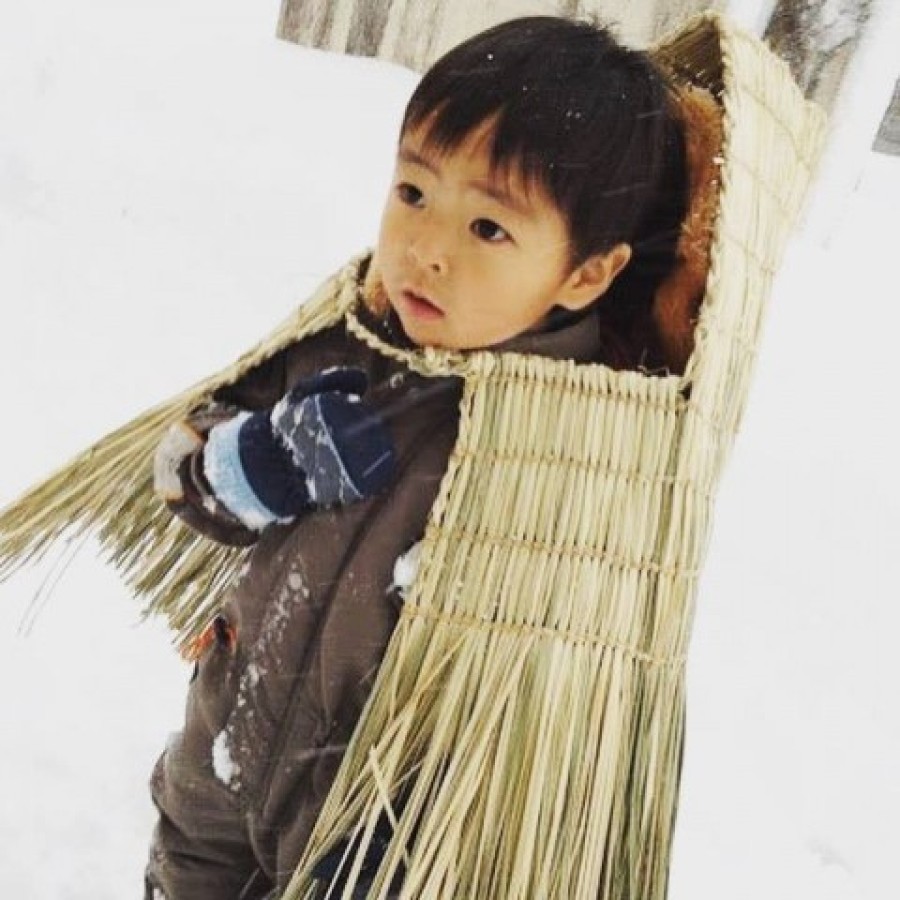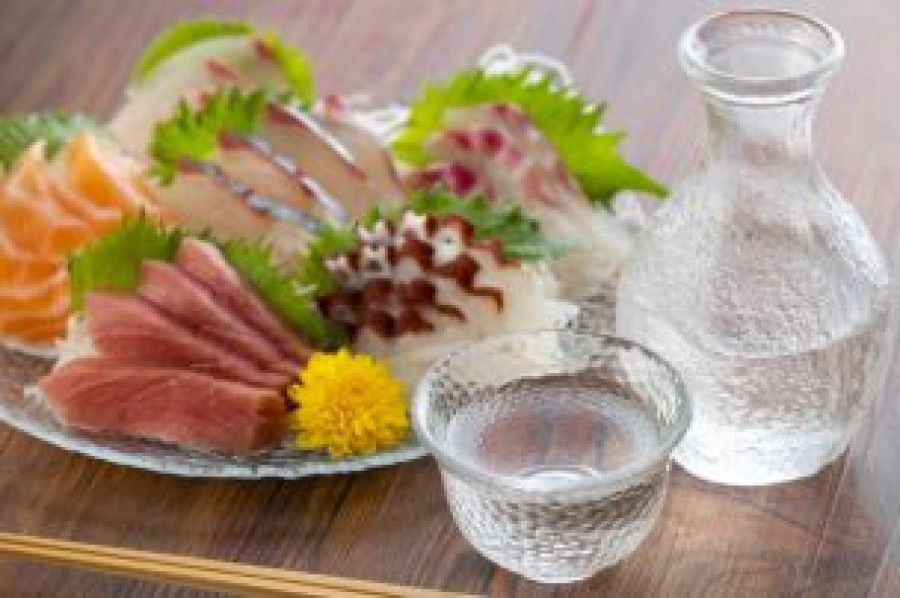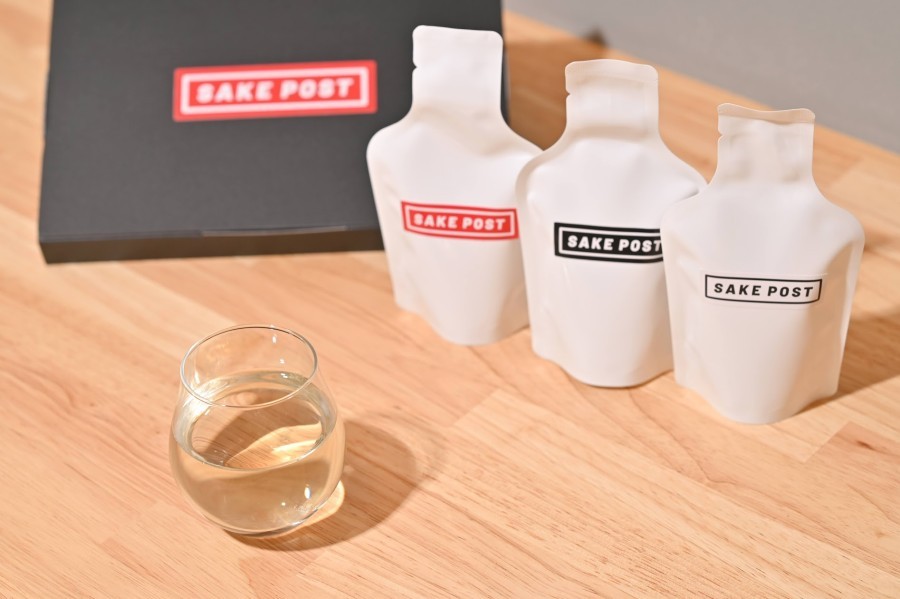The 'Echigo Nagaoka - Machi-meguri' was held in the Nagaoka region. This is a bus tour that connects two of the widely merged Nagaoka City regions by some common point and takes visitors to places related to them.The two regions of Kawaguchi and Nagaoka Muikaichi were visited on 28 September under the theme 'A journey to experience the blessings of the Shinano River and stories of life in the region'.
The schedule for the day is as follows: in the morning the tour will visit the Kawaguchi area, and in the afternoon the tour will visit the Rokkaichi area in Nagaoka.
- Meeting 8:30am.
- Morning] Kawaguchi area 'Folk museum' - 'Water for the Kamikawa area' - 'Group farm Budokubo' - 'Shindo Memorial Park' - 'Shiodome power station site' - 'Echigo-Kawaguchi Yanaba (lunch)'.
- [Afternoon] Muikkaichi area "Myoken weir, Tsuru guard station" - "Myoken shrine, old lighthouse" - "Myoken Miyake shrine" - "Nakagata Kannondo, Mikuni Kaido ruins walk" - "Fukushima River outlet".
- Dismissal 16:00.
The former town of Kawaguchi, which we will visit on this day, used to be a village in Kita-uonuma County, and was merged into Nagaoka City as an enclave in 2010. It is also the confluence of the Shinano River and its largest tributary, the Uono River.
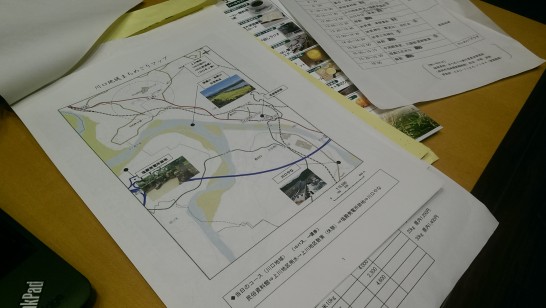
(i) Kawaguchi, 'Kawaguchi History and Folklore Museum'.
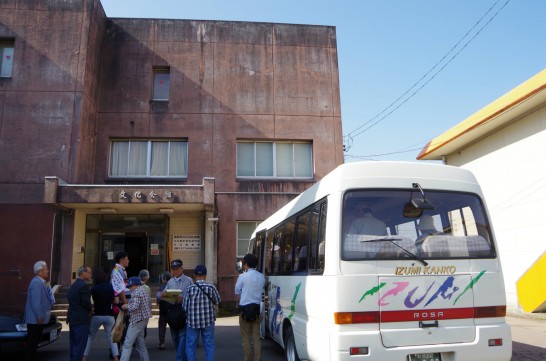
The first place we came to was the Kawaguchi History and Folklore Museum. It is located on the third floor of the Kawaguchi Culture Hall, a rather old public building. However, the museum inside is quite extensive!
Dioramas, timelines and other items were all over the place.
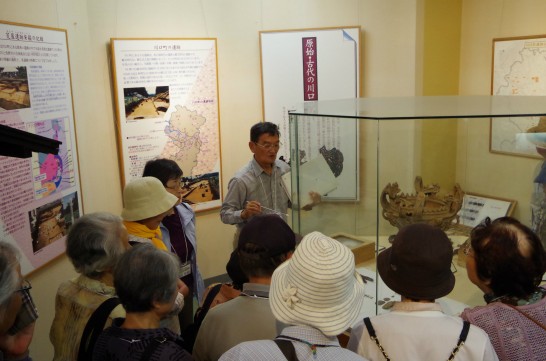
The history of Kawaguchi dates back to the 'Araya Site' of the Palaeolithic period. The stone tools excavated here are said to be characteristic stone tools known as the 'Araya type'.
Kawaguchi was the site of such an archaeological site, but there seems to be no historical record of it until 1600, when it flew all the way from there. Kawaguchi began to flourish as an important traffic point in the Edo period, when the Mikuni Kaido started to be developed for the Kanzoku Shogyo system. The guide told us a lot about this story while looking at the diorama. It is easy to understand the development of the area when looking at the topography.
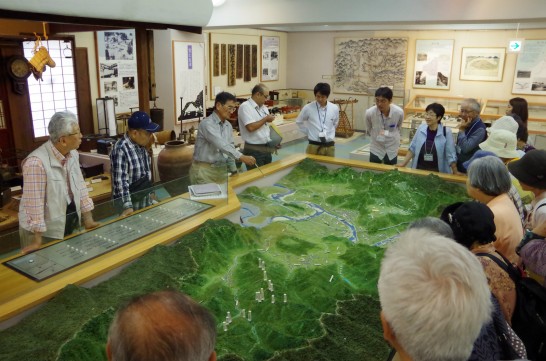
② Kawaguchi "Water for Kamikawa area".
We actually visit the site, having heard about the town through the diorama at the museum.
First came the confluence of the Shinano River and its largest tributary, the Uono River.
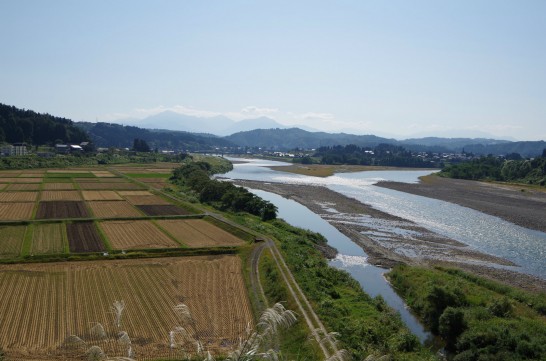
The Shinano River is the largest river in Japan flowing from Nagano Prefecture, as it is known. The Uono River is a first-class river originating in Gunma Prefecture. In the past, waterways were more developed than overland routes, and logistics was carried out by boats travelling on the river. As the confluence of the Shinano River in the direction of Tokamachi and the Uono River flowing from Uonuma, it can be imagined that the river mouth was a hub of waterways and was busy throughout the Edo period with travellers on the Mikuni Kaido, tribute rice from Uonuma and transport of special products.

Such a river mouth is rich in water! but when it comes to its utilisation, there have been some difficult problems. In river mouths with river terrace topography, the river flows through the lowest part of the terrace. Until technology was developed to push water up to the farmland on the terraces, it was only possible to grow rice in paddy fields in limited areas.
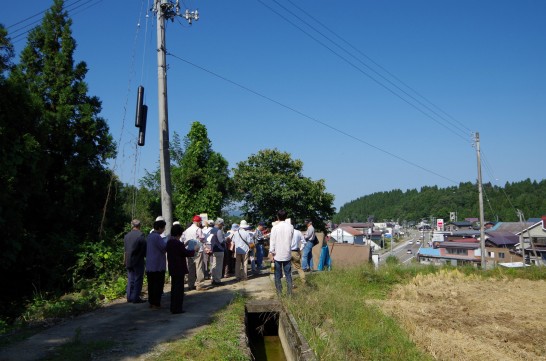
Water for the Kamikawa area is used to transport water over such terraces. Advanced technology is used, such as a system whereby water that has once been assembled is pushed up onto the plateau once more through the bottom of the national road. Thanks to this irrigation water, rice cultivation in the paddy fields in the Kamikawa area has become widely possible.
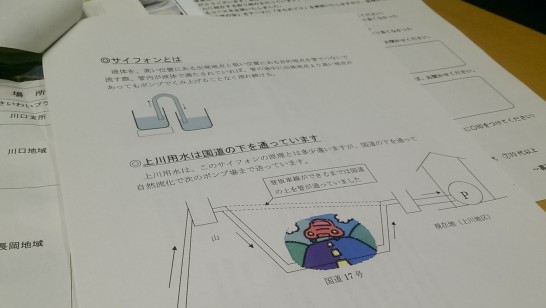
(iii) Kawaguchi, 'Group Farm Budokubo'.
Next came Group Farm Budokubo, an agricultural corporation that uses the water to grow rice.
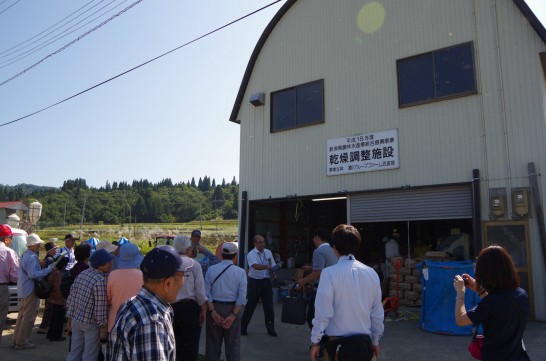
We were in the middle of a shipment of Uonuma Koshihikari rice, said to be the most delicious rice in Japan. It was amazing that a land that once suffered from water problems could now be used to harvest Japan's finest rice. I felt the importance of farmland improvement. Here we were given rice balls made from the new rice!
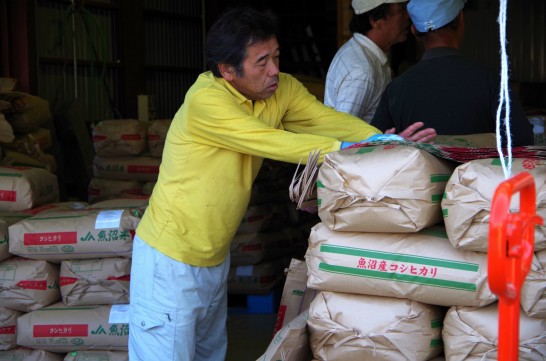
Incidentally, before water for irrigation was built, people used to store rainwater and other water for rice cultivation themselves. There are still many reservoirs around here. And they use these ponds for Nishikigoi farming. Nishikigoi farming is flourishing in the mountainous areas of Niigata Prefecture because of the water problem.
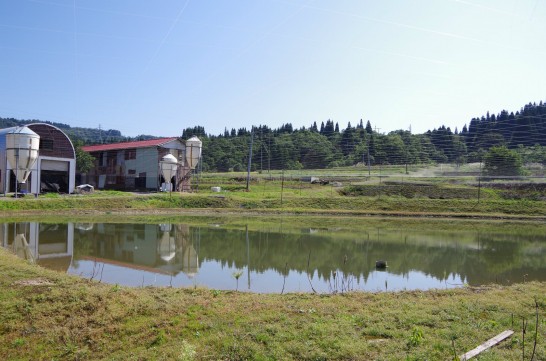
Now, the hard-earned water naturally costs electricity to run the pumps. Therefore, farmers in the area pay several tens of thousands of yen a year in pump usage fees. So rice farming is not free.

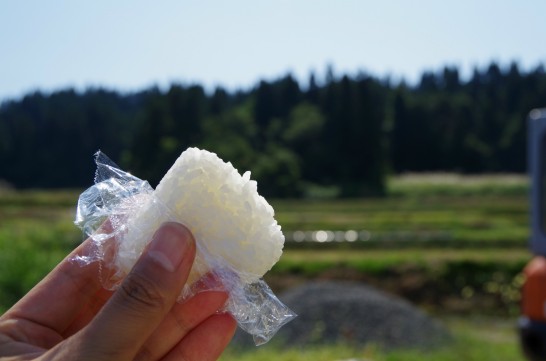
(iv) Kawaguchi, 'Seismic Memorial Park'.
This area of Budokubo was the epicentre of the Niigata Chuetsu Earthquake of 23 October 2004, 10 years ago. Although the epicentre is privately owned, the surrounding area has been developed as the 'Epicentre Memorial Park' and can be visited.
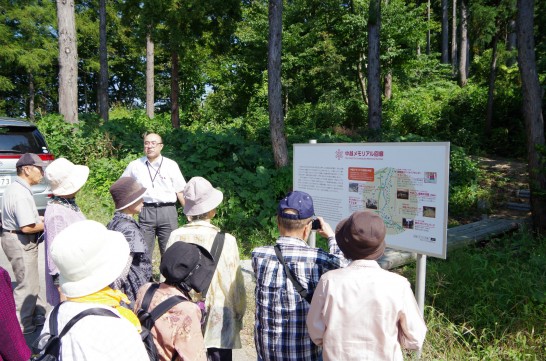
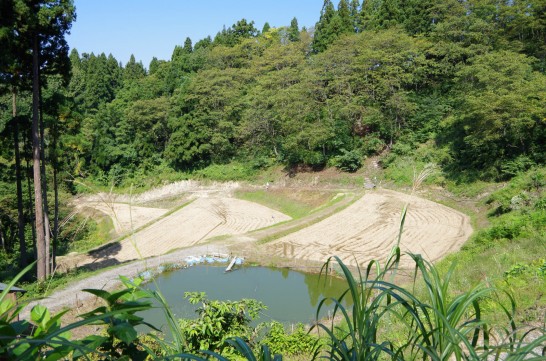
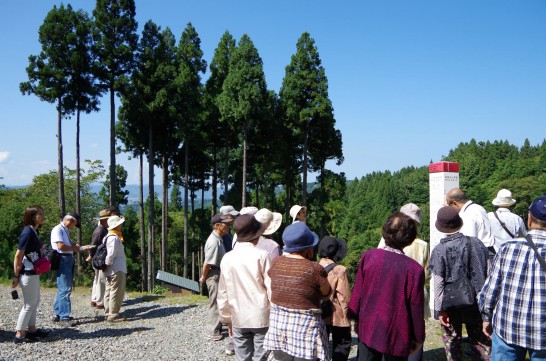
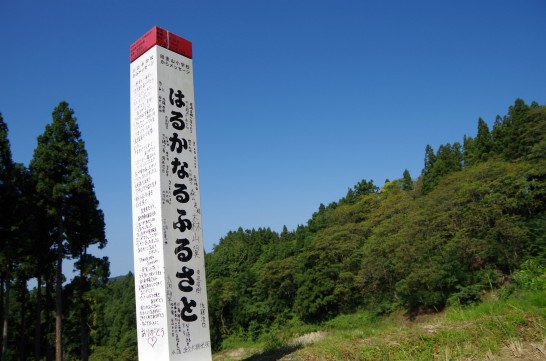
(v) Kawaguchi, "Former site of the Shiodome Power Station"
In Kawaguchi, there was Japan's second 'hydroelectric power station'. It was of course the first hydroelectric power station in the prefecture.
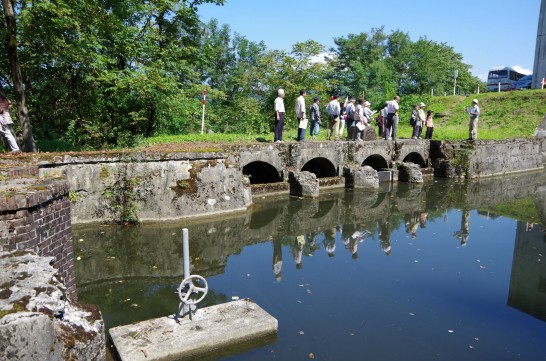
Completed in 1904, the Hokuetsu Hydroelectric Power Station, also known as the Shiodono Power Station, was built by Oguni industrialist Yamaguchi Gonsaburo, who was previously mentioned. The Shiodono Power Station ceased operations in 1951, and now, as the site of the former Shiodono Power Station, some of the buildings from that time are slowly rotting away in nature. The appearance is like Laputa, the castle in the sky in the Ghibli film! The space had a mysterious atmosphere.
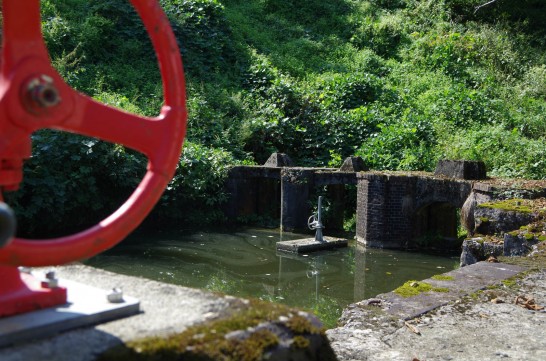
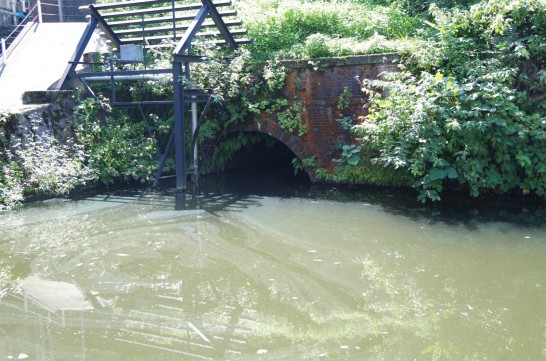

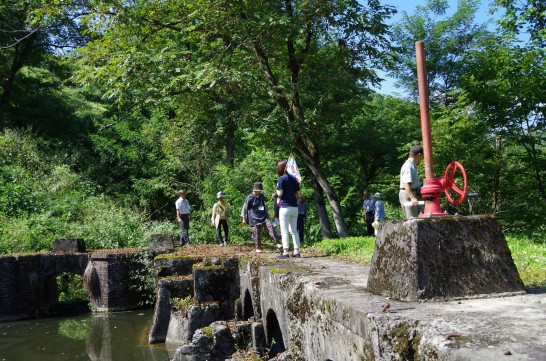
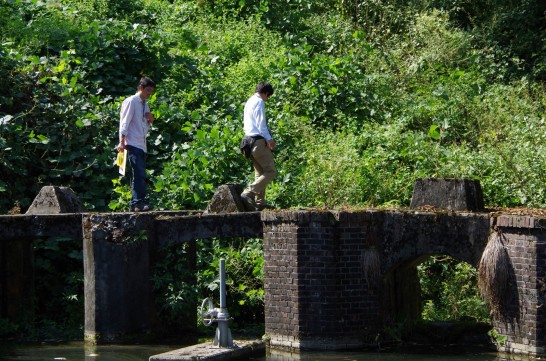
(vi) Kawaguchi 'Echigo-Kawaguchi Yanaba' (lunch).
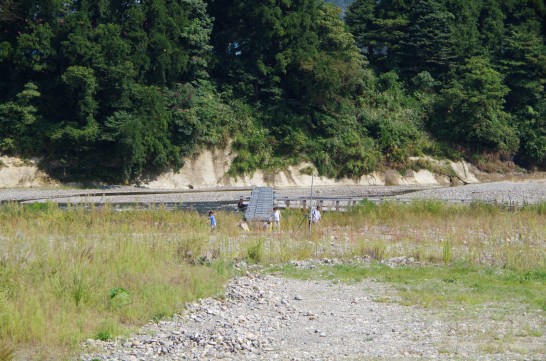
The long-awaited lunch of the day was at the famous "YANABA", which is so famous in Kawaguchi that it is often referred to as the "YANABA". The Echigo-Kawaguchi Yanaba boasts the oldest tradition in Japan and is located on the Uono River! Also known as 'Otokoyama Fishing Ground'.

Unfortunately, the cannery was damaged in the 2013 torrential rain disaster, so the cannery fishing experience is currently suspended. Meals were also served in an annex.
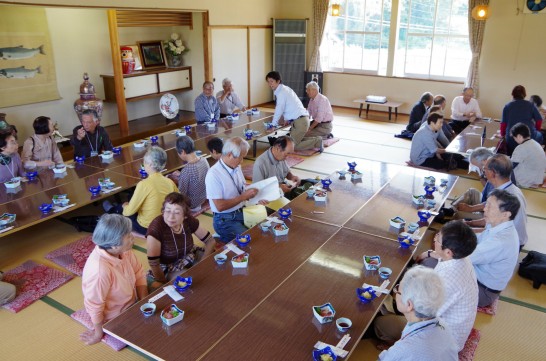
We had a lunch set meal of grilled ayu fish, ayu fish rice and fried salmon! In the Kawaguchi area, grilled ayu fish is "bitten from the head down and eaten all the way to the tail! The plate after the meal is left with the bones. The plate after the meal is clean and freshly washed, with no bones or skin, I was told!
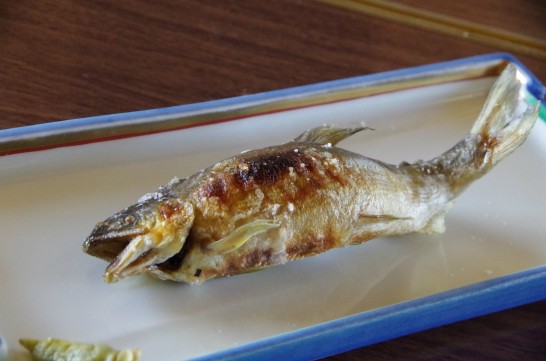
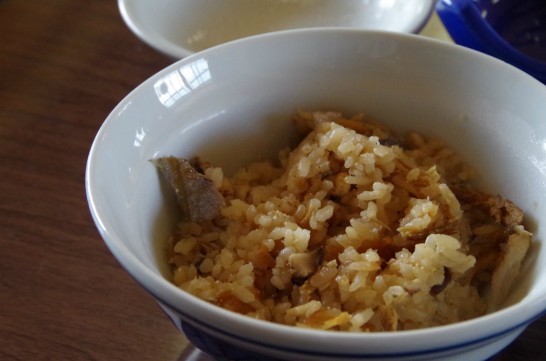
It was probably the first time I had eaten a fish head. The gross was bitter but tasty.
(vii) Rokkaichi, "Myoken weir, Tsuru guard station".
Now, in the afternoon, we arrived in the Rokkaichi area of Nagaoka City, a short distance down the Shinano River, which joins the Uono River. The first place we came to was the present-day 'Myoken-weir'. This is where there used to be a ship's barrier called 'Tsurubansho'.
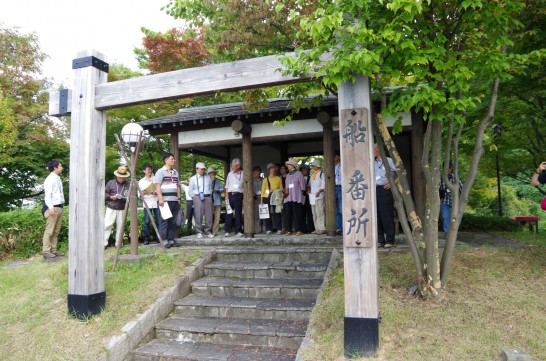
The 'Tsurubansho' was a guard post established during the Edo period for the purpose of economic control and security of the clan. Here, eight items such as rice, soya, coins and cotton were monitored to ensure that they did not flow out of the area without permission. A bill was required for the transfer of the eight items in question.
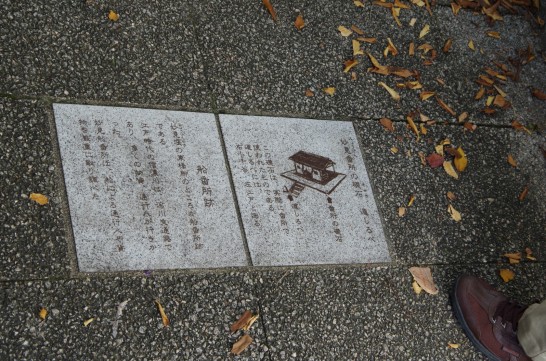
The Myoken Weir was built in 1985 by the state at a cost of approximately 22 billion yen. It serves to regulate the volume of water by bringing the rivers together, and also brings in water for water supply and agriculture from here. Nagaoka City's tap water is sent to the water purification plant from here!
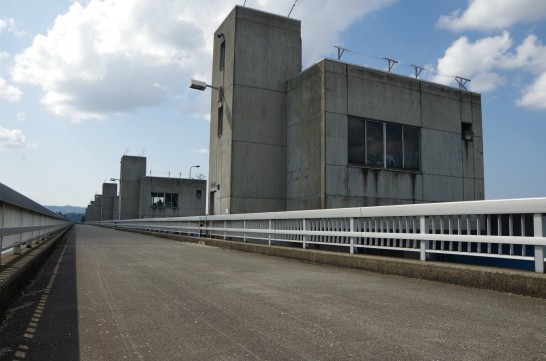
Agricultural water, known as 'Fukushima River', is also assembled from here.
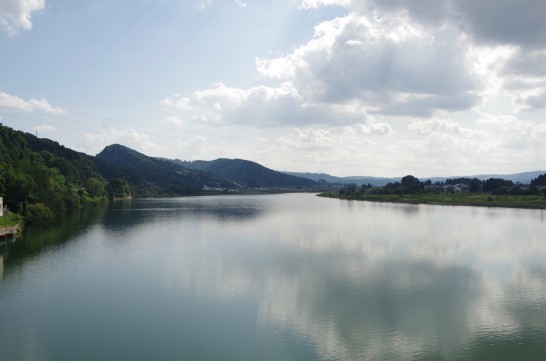
(viii) Rokkaichi: 'Myoken Shrine and Old Lighthouse' - 'Myoken Miyake Shrine' - 'Nakagata Kannondo and Mikuni Highway Site Walk'
A walk around Muikkaichi, which has been built alongside such a river, with a focus on shrines. There was a view of the Shinano River from Myoken Shrine, a touch of history at Miyake Shrine and a surprise at Nakagata Kannondo.
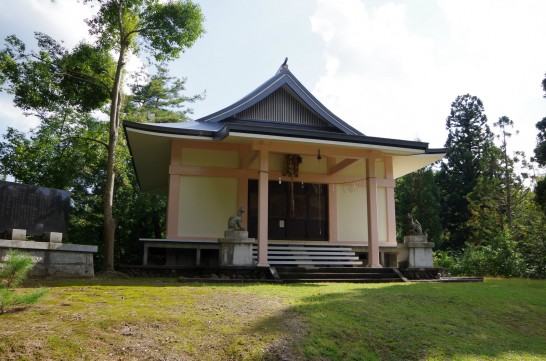 Myomi Shrine
Myomi Shrine
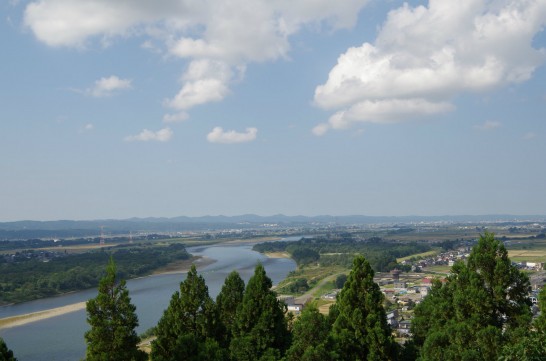 From the viewing platform at Myoken Shrine.
From the viewing platform at Myoken Shrine.
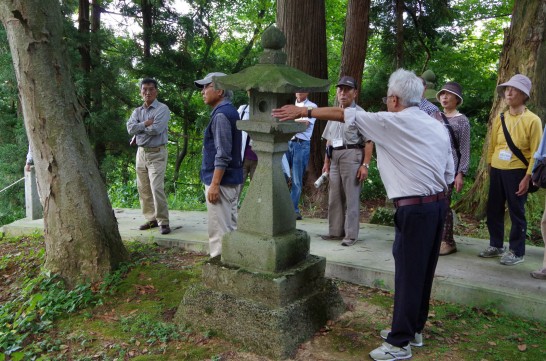 Lighthouse used in the past!
Lighthouse used in the past!
 This is how the Shinano River looks from the lighthouse. I hear the candlelight here was a landmark.
This is how the Shinano River looks from the lighthouse. I hear the candlelight here was a landmark.
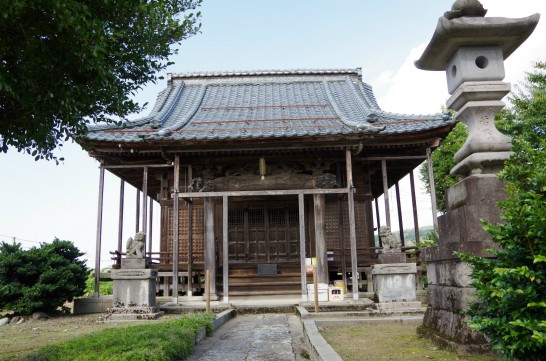 HistoryOld Myoken Miyake shrine.
HistoryOld Myoken Miyake shrine.
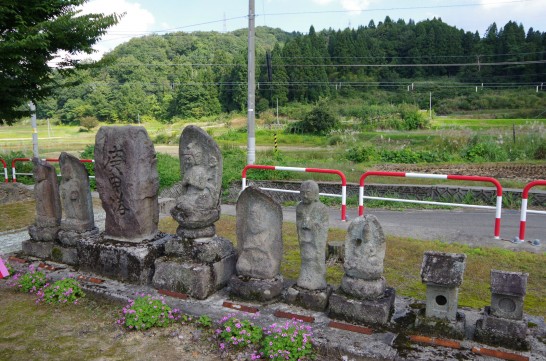 Various old stone statues by the Miyake Shrine.
Various old stone statues by the Miyake Shrine.
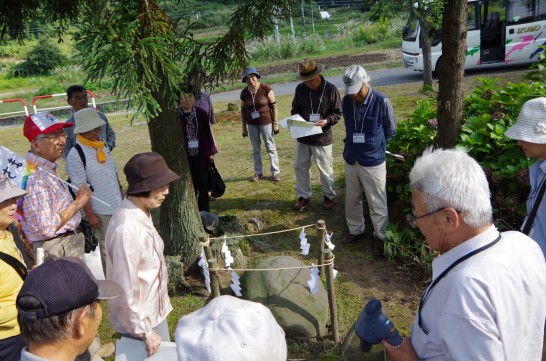
At Nakagata Kannon Hall, visitors were able to see two Buddhist statues that can only be seen on 17 August every year. Legend has it that the Kannon statues were carved in 720, once forgotten and buried, and dug up again around 1460. It is said to be a Buddha image filled with a tremendous amount of history. We were surprised that they showed us such a historic cultural asset as if they were our neighbours, saying "I left the hall unlocked because it looks like people are coming today" (laughs)!
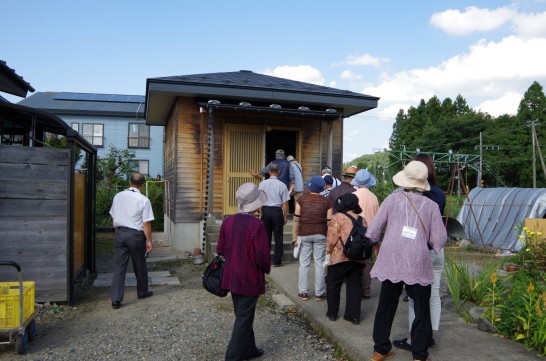 Nakagata Kannondo Temple
Nakagata Kannondo Temple
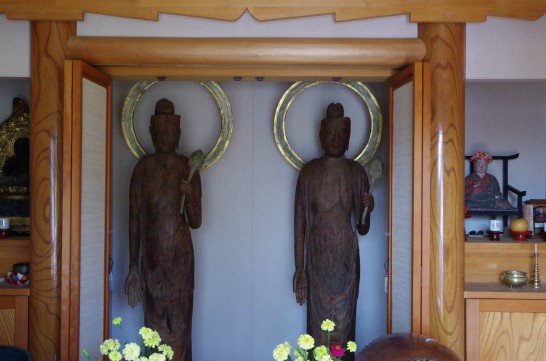 Buddha images that are really only seen once a year.
Buddha images that are really only seen once a year.
⑨ Fukushima River Outlet, Rokkaichi City
And lastly, we came to the Fukushima River Outlet. The water that was built up for agricultural use from the Myoken Weir at (7) and used in the Fukushima River is said to return to the Shinano River here. The Fukushima River was built in the Edo period and has supported rice production in the area for many years.
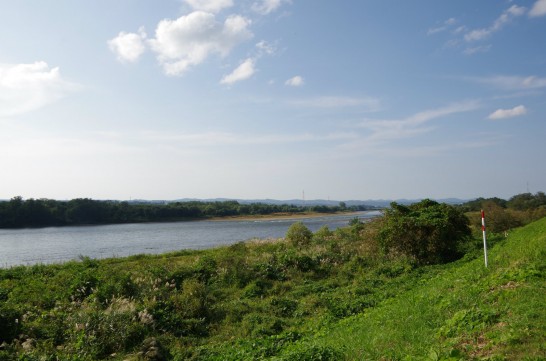

the end
and the bus tour that went around the river and touched on local life. There was so much to do that my head could not keep up with it during the tour, but when I wrote the article looking back like this, I felt again the greatness of the course selection, saying "Ah, I can see the connection between the region and the Shinano River very well". It is a unique feature of the "Echigo Nagaoka Machi Meguri" that you can tour places that you would hardly see if you were just going sightseeing, and even gain new knowledge. It is no wonder that every time there are so many applicants that a lottery is held.
The Echigo Nagaoka Machi Meguri is organised and managed by the Echigo Nagaoka Machi Meguri Executive Committee. If you are interested in participating or have any questions, please check the information of the Echigo Nagaoka Machi Meguri Executive Committee!
Official facebook page: https://www.facebook.com/pages/%E8%B6%8A%E5%BE%8C%E9%95%B7%E5%B2%A1%E3%81%BE%E3%81%A1%E3%82%81%E3%81%90%E3%82%8A2014 /694356533975334
Kolite organisation page: http://nkyod.org/group-list/machimeguri
advertisement


